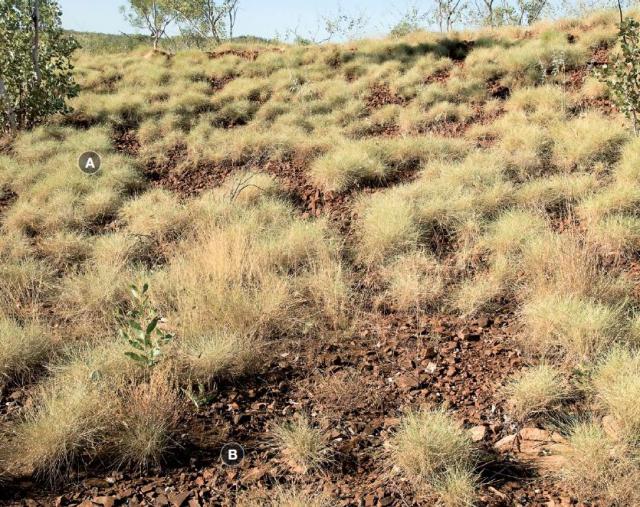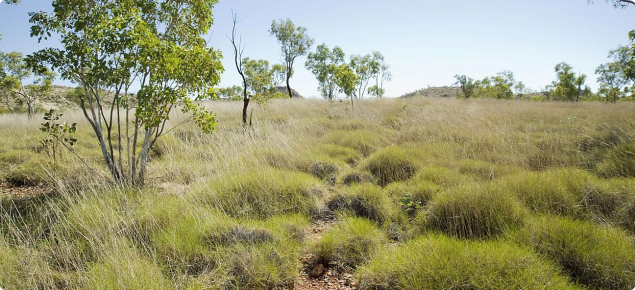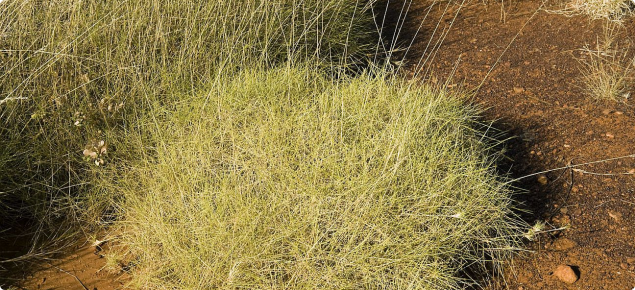Hard spinifex hill pastures
These pastures are part of the Kimberley red soil group - spinifex pastures, and hard spinifexes are the identifier grasses. Use the interactive key to pasture condition to help identify pasture type.
Pastoral value
Pastoral value is very low. Hard spinifex is unpalatable at most stages of growth, and palatable plants are too infrequent to support grazing for any length of time. The upper slopes of these pastures are largely inaccessible to livestock. Condition decline caused by grazing is most likely to be seen in the more-accessible areas of the pasture, such as shallow drainage lines where the more palatable plants tend to occur.
Occurrence
Hard spinifex hill pastures occur as hummock grasslands on hills and ranges in the Kimberley. They are found on shallow, rocky soils. Scattered shrubs and trees, such as snappy gum, may be present.
Pasture condition
Good: In good pasture condition, there is an even coverage of hard spinifex plants. A few desirable perennial grasses, annual grasses and herbs may be scattered among the spinifex clumps, but tend to be concentrated along the drainage lines (Figure 1).

Fair: Hard spinifex hill pastures are not commonly seen in fair condition away from the creeklines. Grazing pressure is concentrated along creeklines in this pasture type and therefore decline in pasture condition will be most noticeable there. The coverage of spinifex plants away from the creeklines may appear patchy. Desirable species show reduced frequency and vigour, and undesirables make up an increased proportion of the non-spinifex species present.
Poor: Hard spinifex hill pastures are rarely seen in poor condition away from the creeklines. Desirable species are likely to be absent in poor condition. The risk of erosion in the creeklines is increased and only a few undesirable perennial and scattered annual grasses remain. There may be large bare areas between spinifex plants away from the creeklines.
Why no photos for fair and poor condition?
Hard spinifex hill pastures are usually only seen in good condition because they are unpalatable and grow in relatively inaccessable areas, therefore no photos of fair or poor condition are provided.
Associated plants
| Common name (link to DPIRD species page) | Scientific name (link to FloraBase) | Life form |
|---|---|---|
| Desirable species | ||
| Triodia intermedia, Triodia wiseana and other hard Triodia spp. | perennial grass | |
| perennial grass | ||
| perennial grass | ||
| perennial grass | ||
| perennial grass | ||
| Intermediate species | ||
| perennial grass | ||
| Wire grass, Northern Wanderrie grass | perennial grass | |
| Citronella grass | perennial grass | |
| Lovegrasses | Eragrostis spp. | annual or perennial grasses |
| annual grass | ||
| Undesirable species | ||
| Threeawn grasses | Aristida spp. | annual or perennial grasses |


